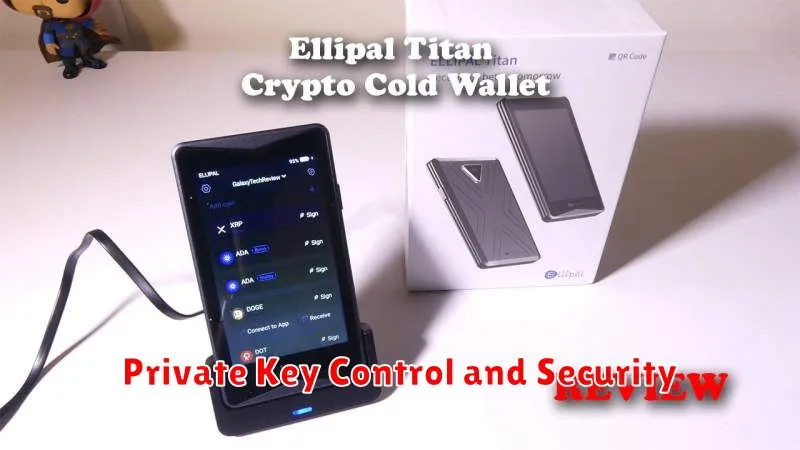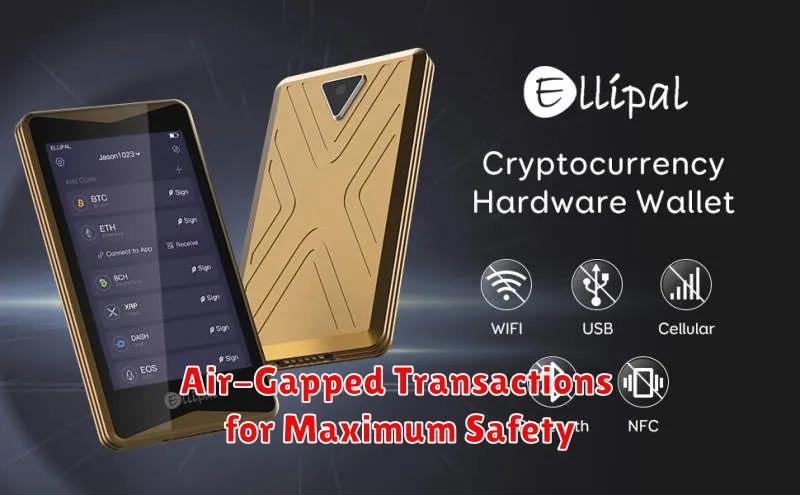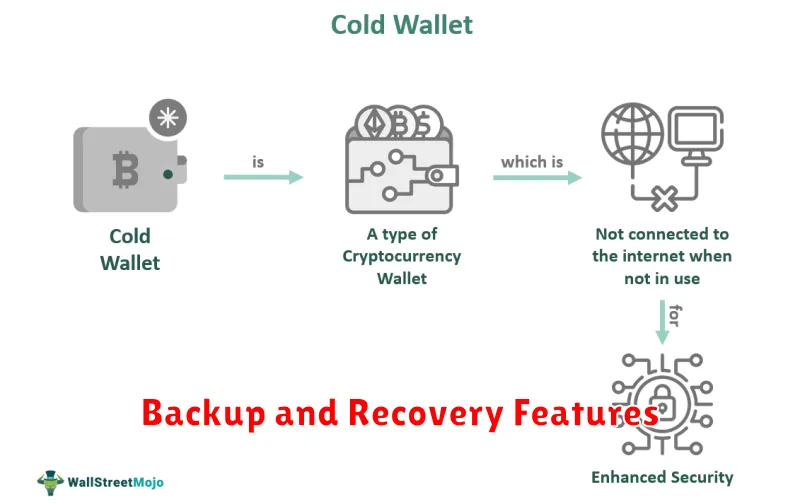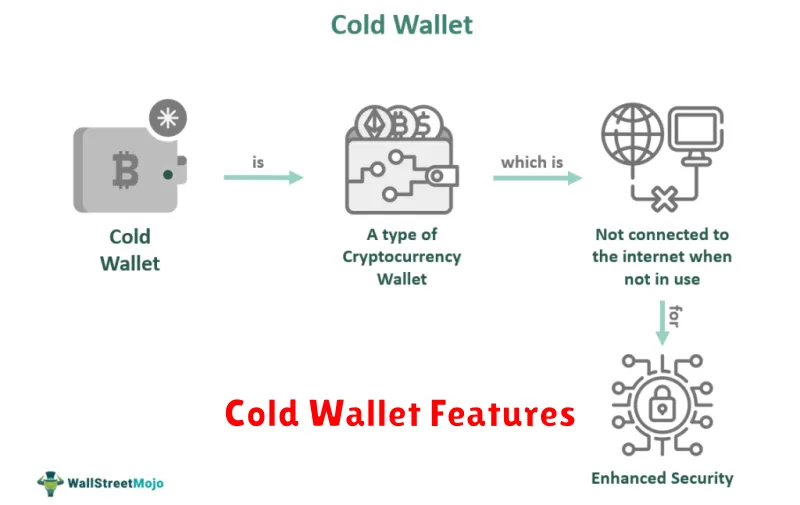Choosing the right crypto cold wallet is crucial for securing your digital assets. With the increasing sophistication of cryptocurrency scams and hacks, it’s essential to prioritize security. This article outlines 5 key features every robust cold storage wallet should possess to ensure the ultimate protection of your valuable Bitcoin, Ethereum, and other crypto investments. Understanding these features will empower you to make informed decisions and safeguard your holdings against potential threats.
Private Key Control and Security

A crucial feature of any cold wallet is robust private key management and security. The wallet should allow for complete user control over private keys, ideally employing a system where the keys never leave the user’s physical possession. This often involves using a seed phrase (a mnemonic phrase representing the private key) that the user securely stores offline.
Security features should include robust encryption of the seed phrase and private keys, potentially using advanced methods like hardware security modules (HSMs) for enhanced protection against unauthorized access. The wallet’s design should minimize the risk of malware or phishing attacks by avoiding internet connectivity during key generation and transaction signing.
The wallet should offer options for multi-signature transactions, adding an extra layer of security by requiring multiple confirmations before executing a transaction. This is especially beneficial for managing large sums of cryptocurrency.
Ideally, the wallet should be designed with a focus on user privacy, minimizing the collection and storage of personal data. Transparency in the security architecture is also vital, allowing users to understand how their private keys are protected.
Air-Gapped Transactions for Maximum Safety

An air-gapped transaction is a crucial security feature for any crypto cold wallet. This method ensures your wallet remains completely offline, preventing direct connection to the internet and thus shielding it from malware and hacking attempts. Transactions are initiated by transferring the signed transaction data from the offline wallet to an online device, significantly reducing the risk of compromise.
Air-gapping provides the highest level of security against various attacks, including phishing, keyloggers, and remote exploits. By disconnecting the wallet from any network, you create an impenetrable barrier against external threats that could otherwise steal your private keys and drain your funds. This isolation is paramount for safeguarding your cryptocurrency holdings.
The process typically involves using a separate, secure device (like a USB drive) to transfer the necessary transaction details. This carefully controlled process minimizes exposure and maximizes the protection of your private keys, which are never directly connected to an online network during the signing process.
While air-gapped transactions might seem inconvenient, the enhanced security they provide far outweighs any perceived drawbacks. For users holding significant amounts of cryptocurrency, it’s an essential feature ensuring the safety and integrity of their digital assets. It’s the gold standard in cold wallet security.
Multi-Currency Support for Versatility

A crucial feature of any robust crypto cold wallet is multi-currency support. This allows users to store a diverse range of cryptocurrencies in a single, secure device, eliminating the need for multiple wallets and simplifying portfolio management. The ability to hold various assets within one cold storage solution significantly enhances versatility and convenience.
Broad compatibility with major cryptocurrencies and tokens is essential. A wallet supporting only a limited number of assets restricts users and reduces its overall practicality. The more cryptocurrencies a cold wallet supports, the more valuable and adaptable it becomes for users with diversified portfolios.
Furthermore, future-proofing is a key consideration. The cryptocurrency market is constantly evolving, with new coins and tokens emerging regularly. A wallet with easily updatable firmware and the potential for future currency additions ensures the long-term usability and value of your cold storage solution.
Backup and Recovery Features

Robust backup and recovery options are paramount for any crypto cold wallet. The ability to securely back up your seed phrase or private keys is crucial in case of wallet loss or damage. This backup should be stored offline and in multiple secure locations.
The recovery process should be straightforward and secure, allowing you to easily restore your wallet and access your crypto assets if needed. Clear instructions and multiple recovery methods enhance security and user experience. Consider features like passphrase protection for added security during the recovery process.
Multi-signature support can provide an extra layer of security by requiring multiple confirmations for transactions. This added step can prevent unauthorized access even if a backup is compromised. Consider wallets offering a choice between single and multi-signature functionality to match your risk tolerance.
Finally, ensure the wallet provider offers reliable customer support to guide you through the backup and recovery processes if you encounter issues. Easy-to-understand documentation and responsive support are valuable in mitigating potential problems.
Tamper-Proof Hardware Design

A tamper-proof hardware design is crucial for a secure crypto cold wallet. This involves using robust materials and construction techniques to prevent physical access to the wallet’s internal components. Features like a sealed casing, shielding against electromagnetic attacks (EMI shielding), and anti-tampering mechanisms that trigger alerts or data destruction upon unauthorized opening are essential.
The secure element (SE), a specialized microcontroller, should be physically protected within the device. This isolated chip houses the private keys, preventing them from being compromised even if the main processor is breached. Robust physical security measures deter attacks, while the SE’s tamper-evident design adds another layer of protection.
Furthermore, a strong hardware-based security module is paramount. This dedicated hardware is designed to resist various attacks, including side-channel attacks that exploit subtle variations in power consumption or electromagnetic emissions. Advanced encryption algorithms and secure boot processes further enhance the overall security of the cold wallet.

